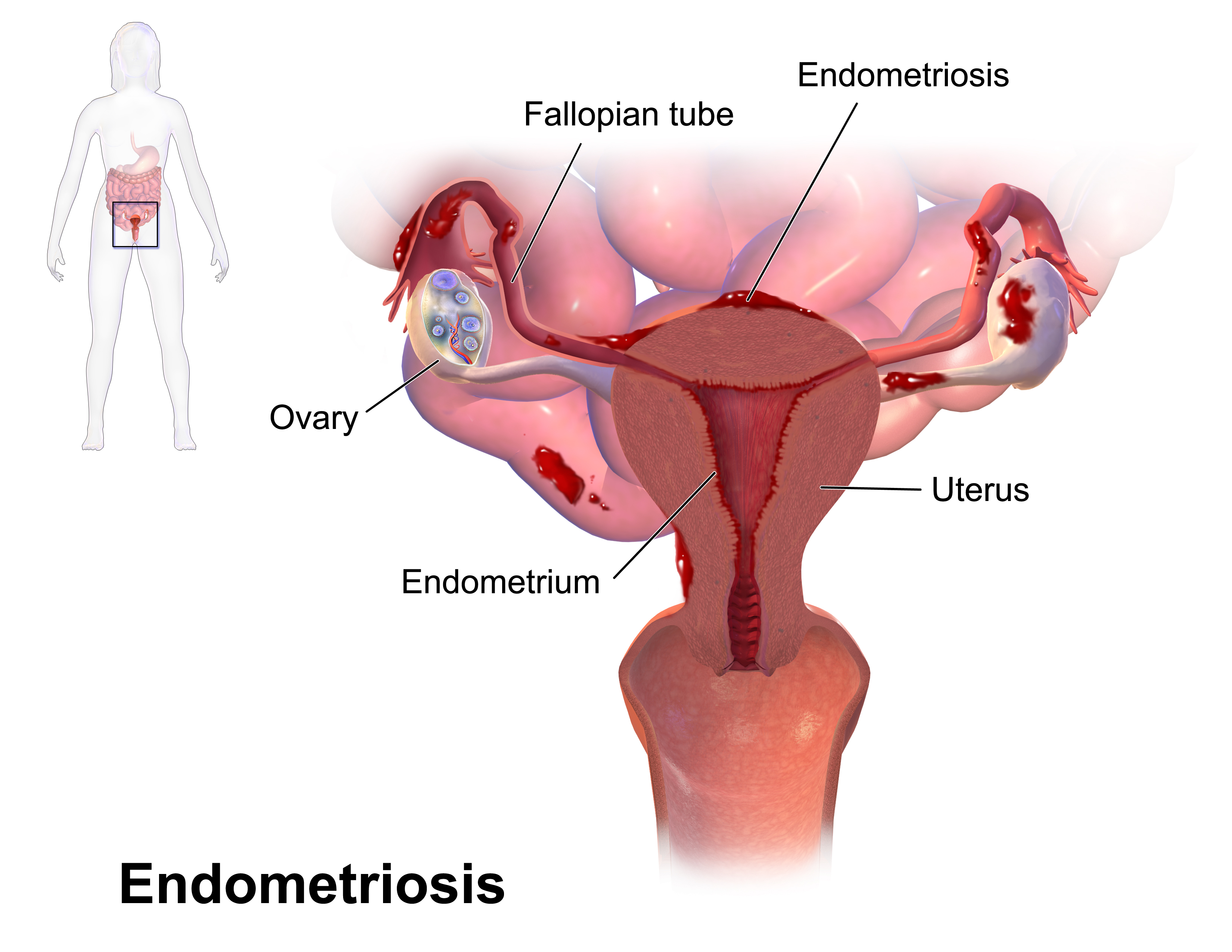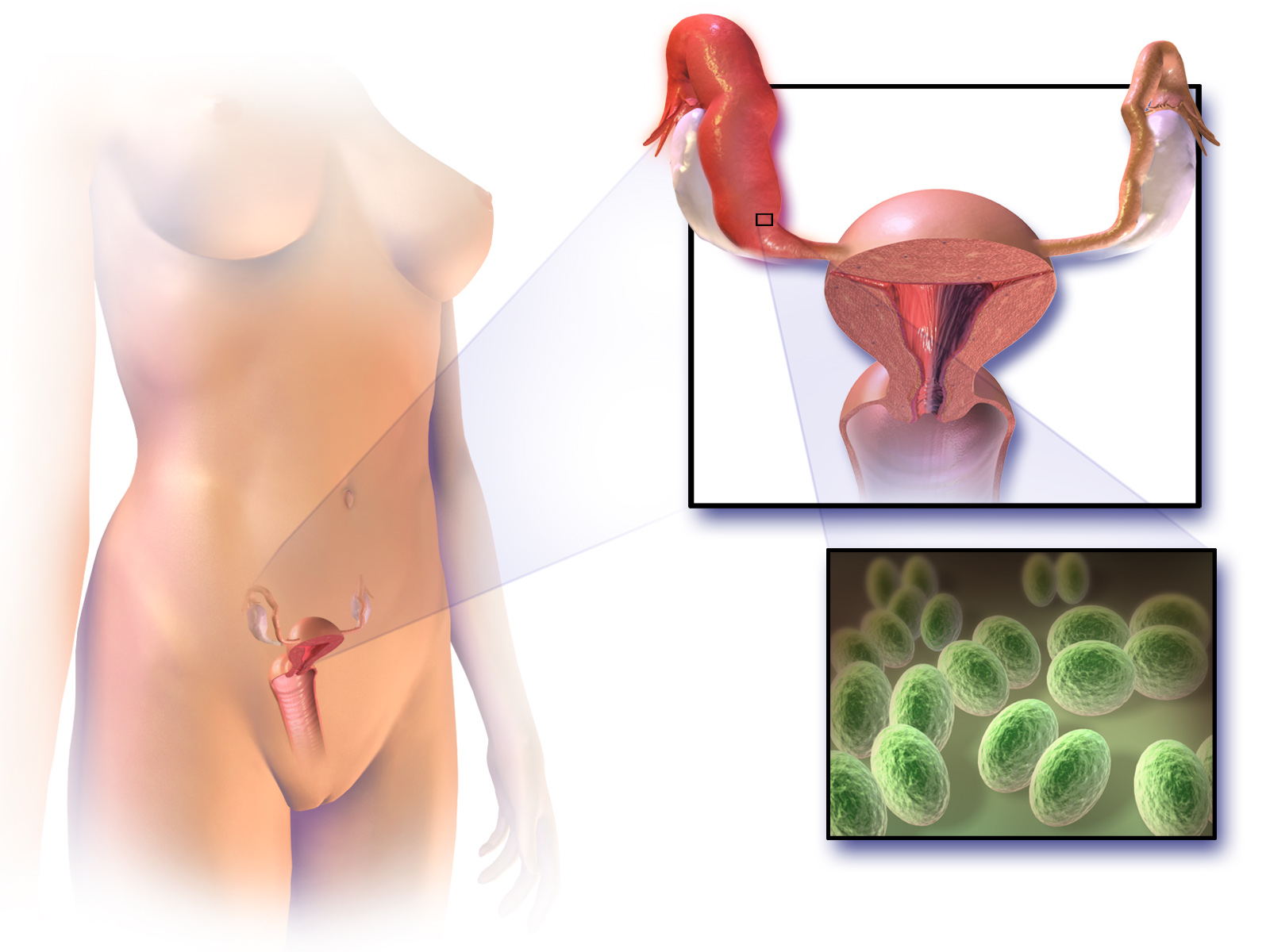|
List Of MeSH Codes (C13)
The following is a partial list of the "C" codes for Medical Subject Headings (MeSH), as defined by the United States National Library of Medicine (NLM). This list continues the information at List of MeSH codes (C12). Codes following these are found at List of MeSH codes (C14). For other MeSH codes, see List of MeSH codes. The source for this content is the set o2006 MeSH Treesfrom the NLM. – female genital diseases and pregnancy complications – genital diseases, female – Adnexa of uterus, adnexal diseases * – fallopian tube diseases * – fallopian tube neoplasms * – salpingitis * – ovarian diseases * – anovulation * – menopause, premature * – oophoritis * – ovarian cysts * – polycystic ovary syndrome * – ovarian failure, premature * – ovarian hyperstimulation syndrome * – ovarian neoplasms * – brenner tumor * – carcinoma, endometrioid * – granulosa cell tumor * – luteoma * – meigs syndrome * – sertoli-leydig cell ... [...More Info...] [...Related Items...] OR: [Wikipedia] [Google] [Baidu] |
Medical Subject Headings
Medical Subject Headings (MeSH) is a comprehensive controlled vocabulary for the purpose of indexing journal articles and books in the life sciences. It serves as a thesaurus that facilitates searching. Created and updated by the United States National Library of Medicine (NLM), it is used by the MEDLINE/ PubMed article database and by NLM's catalog of book holdings. MeSH is also used by ClinicalTrials.gov registry to classify which diseases are studied by trials registered in ClinicalTrials. MeSH was introduced in the 1960s, with the NLM's own index catalogue and the subject headings of the Quarterly Cumulative Index Medicus (1940 edition) as precursors. The yearly printed version of MeSH was discontinued in 2007; MeSH is now available only online. It can be browsed and downloaded free of charge through PubMed. Originally in English, MeSH has been translated into numerous other languages and allows retrieval of documents from different origins. Structure MeSH vocabulary is ... [...More Info...] [...Related Items...] OR: [Wikipedia] [Google] [Baidu] |
Ovarian Failure, Premature
Primary ovarian insufficiency (POI) (also called premature ovarian insufficiency, premature menopause, and premature ovarian failure) is the partial or total loss of reproductive and hormonal function of the ovaries before age 40 because of folliclular (egg producing area) dysfunction or early loss of eggs. POI can be seen as part of a continuum of changes leading to menopause that differ from age-appropriate menopause in the age of onset, degree of symptoms, and sporadic return to normal ovarian function. POI affects approximately 1 in 10,000 women under age 20, 1 in 1,000 women under age 30, and 1 in 100 of those under age 40. A medical triad for the diagnosis is amenorrhea, hypergonadotropism, and hypoestrogenism. Physical and emotional symptoms include hot flashes, night sweats, dry skin, vaginal dryness, irregular or absent menstruation, anxiety, depression, mental fog, irritability, nervousness, decreased libido, and increased autoimmune disruption. The sense of shock an ... [...More Info...] [...Related Items...] OR: [Wikipedia] [Google] [Baidu] |
Endometriosis
Endometriosis is a disease of the female reproductive system in which cells similar to those in the endometrium, the layer of tissue that normally covers the inside of the uterus, grow outside the uterus. Most often this is on the ovaries, fallopian tubes, and tissue around the uterus and ovaries; in rare cases it may also occur in other parts of the body. Some symptoms include pelvic pain, heavy periods, pain with bowel movements, and infertility. Nearly half of those affected have chronic pelvic pain, while in 70% pain occurs during menstruation. Pain during sexual intercourse is also common. Infertility occurs in up to half of affected individuals. About 25% of individuals have no symptoms and 85% of those seen with infertility in a tertiary center have no pain. Endometriosis can have both social and psychological effects. The cause is not entirely clear. Risk factors include having a family history of the condition. The areas of endometriosis bleed each month (menst ... [...More Info...] [...Related Items...] OR: [Wikipedia] [Google] [Baidu] |
Parametritis
Parametritis (also known as pelvic cellulitis) is an infection of the parametrium (connective tissue adjacent to the uterus). It is considered a form of pelvic inflammatory disease Pelvic inflammatory disease, also known as pelvic inflammatory disorder (PID), is an infection of the upper part of the female reproductive system, namely the uterus, fallopian tubes, and ovaries, and inside of the pelvis. Often, there may be no .... References External links {{Diseases of the pelvis, genitals and breasts Inflammatory diseases of female pelvic organs ... [...More Info...] [...Related Items...] OR: [Wikipedia] [Google] [Baidu] |
Endometritis
Endometritis is inflammation of the inner lining of the uterus (endometrium). Symptoms may include fever, lower abdominal pain, and abnormal vaginal bleeding or discharge. It is the most common cause of infection after childbirth. It is also part of spectrum of diseases that make up pelvic inflammatory disease. Endometritis is divided into acute and chronic forms. The acute form is usually from an infection that passes through the cervix as a result of an abortion, during menstruation, following childbirth, or as a result of douching or placement of an IUD. Risk factors for endometritis following delivery include Caesarean section and prolonged rupture of membranes. Chronic endometritis is more common after menopause. The diagnosis may be confirmed by endometrial biopsy. Ultrasound may be useful to verify that there is no retained tissue within the uterus. Treatment is usually with antibiotics. Recommendations for treatment of endometritis following delivery includ ... [...More Info...] [...Related Items...] OR: [Wikipedia] [Google] [Baidu] |
Pelvic Inflammatory Disease
Pelvic inflammatory disease, also known as pelvic inflammatory disorder (PID), is an infection of the upper part of the female reproductive system, namely the uterus, fallopian tubes, and ovaries, and inside of the pelvis. Often, there may be no symptoms. Signs and symptoms, when present, may include lower abdominal pain, vaginal discharge, fever, burning with urination, pain with sex, bleeding after sex, or irregular menstruation. Untreated PID can result in long-term complications including infertility, ectopic pregnancy, chronic pelvic pain, and cancer. The disease is caused by bacteria that spread from the vagina and cervix. Infections by ''Neisseria gonorrhoeae'' or ''Chlamydia trachomatis'' are present in 75 to 90 percent of cases. Often, multiple different bacteria are involved. Without treatment, about 10 percent of those with a chlamydial infection and 40 percent of those with a gonorrhea infection will develop PID. Risk factors are generally similar to those of sexual ... [...More Info...] [...Related Items...] OR: [Wikipedia] [Google] [Baidu] |
Thecoma
Thecomas or theca cell tumors are benign ovarian neoplasms composed only of theca cells. Histogenetically they are classified as sex cord-stromal tumours. They are typically estrogen-producing and they occur in older women (mean age 59; 84% after menopause). (They can, however, appear before menopause.) 60% of patients present with abnormal uterine bleeding, and 20% have endometrial carcinoma. Pathologic features Grossly, the tumour is solid and yellow. Grossly and microscopically, it consists of the ovarian cortex. Microscopically, the tumour cells have abundant lipid-filled cytoplasm In cell biology, the cytoplasm is all of the material within a eukaryotic cell, enclosed by the cell membrane, except for the cell nucleus. The material inside the nucleus and contained within the nuclear membrane is termed the nucleoplasm. .... References External links Gynaecological neoplasia {{oncology-stub ... [...More Info...] [...Related Items...] OR: [Wikipedia] [Google] [Baidu] |
Meigs Syndrome
In medicine, Meigs's syndrome, also Meigs syndrome or Demons–Meigs syndrome, is the triad of ascites, pleural effusion, and benign ovarian tumor (ovarian fibroma, fibrothecoma, Brenner tumour, and occasionally granulosa cell tumour). Meigs syndrome resolves after the resection of the tumor. Because the transdiaphragmatic lymphatic channels are larger in diameter on the right, the pleural effusion is classically on the right side. The causes of the ascites and pleural effusion are poorly understood. Atypical Meigs syndrome, characterized by a benign pelvic mass with right-sided pleural effusion but without ascites, can also occur. As in typical Meigs syndrome, pleural effusion resolves after removal of the pelvic mass. Diagnosis Differential diagnosis Meigs syndrome may mimic other conditions, since it is tumor arising from ovaries, pathology of any organs present in the abdomen may show a similar set of symptoms. These include various gynecological disorders of the uterus such ... [...More Info...] [...Related Items...] OR: [Wikipedia] [Google] [Baidu] |
Luteoma
A luteoma is a tumor that occurs in the ovaries during pregnancy. It is associated with an increase of sex hormones, primarily progesterone and testosterone. The size of the tumor can range from 1 to 25 cm in diameter, but is usually 6 to 10 cm in diameter and can grow throughout the duration of the pregnancy. However, luteomas are benign and resolve themselves after delivery. This type of tumor is rare with only about 200 documented cases; many of these cases were detected accidentally, so the actual rate of occurrence may be higher. The most obvious symptom of a luteoma is masculinization of the mother and the possible masculinization of the fetus. This occurs because of the release of testosterone by the luteoma. Testosterone is a sex hormone most abundant in men although small amounts are naturally present in women. Testosterone is responsible for the male characteristics such as deepening of the voice, growth of dark hair, and acne. While not life-threatening, the dev ... [...More Info...] [...Related Items...] OR: [Wikipedia] [Google] [Baidu] |
Granulosa Cell Tumor
Granulosa cell tumours are tumours that arise from granulosa cells. They are estrogen secreting tumours and present as large, complex, ovarian masses. These tumours are part of the sex cord-gonadal stromal tumour or non-epithelial group of tumours. Although granulosa cells normally occur only in the ovary, granulosa cell tumours occur in both ovaries and testicles (see ovarian cancer and testicular cancer). These tumours should be considered malignant and treated in the same way as other malignant tumours of ovary. The ovarian disease has two forms, juvenile and adult, both characterized by indolent growth, and therefore has high recovery rates. The staging system for these tumours is the same as for epithelial tumours and most present as stage I.Gynaecology. 3rd Ed. 2003. Churchill Livingstone, pp. 690-691. The peak age at which they occur is 50–55 years, but they may occur at any age. Juvenile granulosa cell tumour is a similar but distinct rare tumour. It too occurs in both ... [...More Info...] [...Related Items...] OR: [Wikipedia] [Google] [Baidu] |
Carcinoma, Endometrioid
Endometrioid tumors are a class of tumor characterized by a resemblance to endometrium/ endometrial carcinoma, and over a third of cases have focal squamous differentiation. Ovary They are part of the surface epithelial tumor group of ovarian neoplasms (10–20% of which are the endometrioid type). Benign and borderline variants are rare, as the majority are malignant. There is an association with endometriosis and concurrent primary endometrial carcinoma (endometrial cancer). On gross pathological examination, the tumor is cystic and may be solid and some arise in cystic endometriosis. In 40% of cases, endometrioid tumors are found bilaterally. Endometrium Endometrioid carcinoma can also arise in the endometrium. Grades 1 and 2 are considered "type 1" endometrial cancer, while grade 3 is considered "type 2". File:Pie chart of relative incidences of endometrial carcinoma.png, Relative incidences of endometrial carcinomas by histopathology, being endometrioid in a majority of ... [...More Info...] [...Related Items...] OR: [Wikipedia] [Google] [Baidu] |


_(14766013522).jpg)


